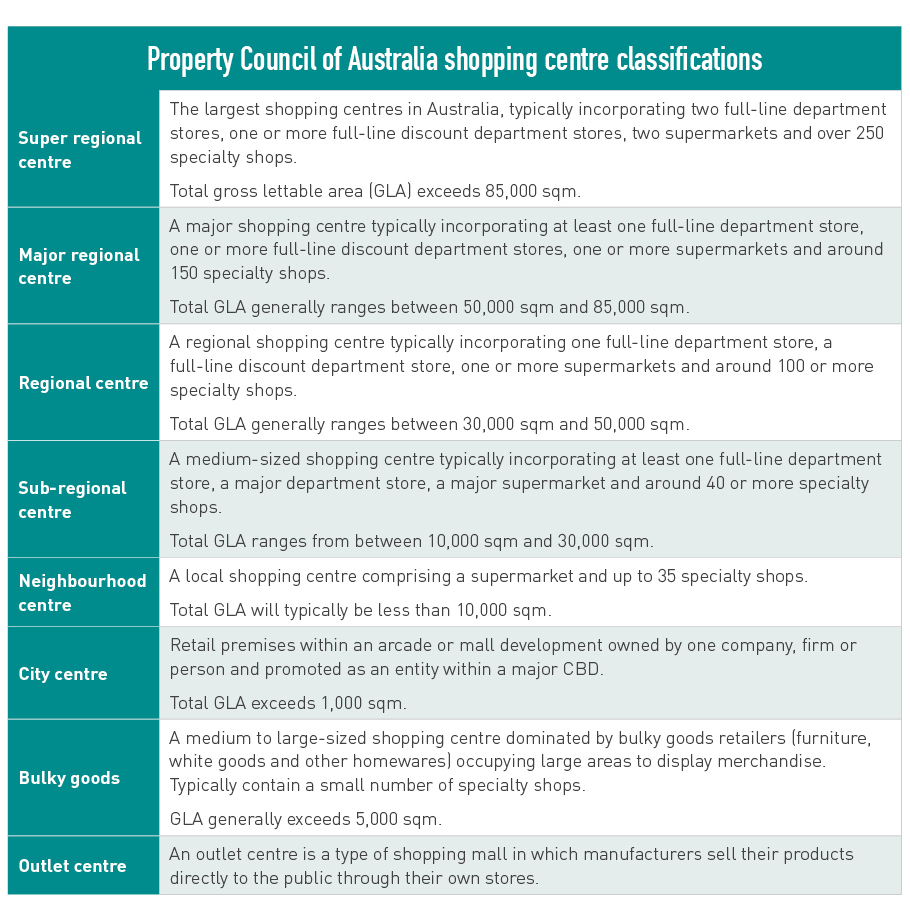Catchment refers to the sphere of influence from which a retail location – for example, a shopping centre – is likely to draw its customers. The general concept of a retail catchment area comprises three major considerations – supply factors, demand factors and consumer interactions.
On the supply side, there is the strength of the offering in terms of a centre’s quality, age, size, location and tenant mix. Alternatively, demand factors include location, population and demographic makeup of the catchment area. The supply and demand factors, in turn, dictate consumer interactions. A centre with a better offering will draw consumers from greater distances than centres with few points of difference to its competitors.
There are, however, a number of other important catchment-related considerations. Firstly, the position of a retail centre within the hierarchy of other local retail centres. This is determined by the format and size of the centre, population density of its catchment, the competitive intensity, and how well its proposition fits the needs of the consumer base.
For example, a high-end boutique centre with luxury fashion retailers would more than likely fare poorly in a low socio-economic area.
Generally, a catchment with a large population will have a greater retail offering, to the extent it acts as an employment hub and economic driver, thereby attracting customers from a wider area. A smaller, or remote catchment, will more than likely serve a different function, be more embedded in local economies and be patronised more frequently by local communities.
In Australia, the Property Council of Australia sets out classifications for shopping centres, which are closely aligned to the concept of ‘catchment’. This is shown below.
The importance of catchment cannot be overlooked. It is vital shopping centre investors and managers understand their catchment area in terms of socioeconomic status, size and demographics, and are able to tailor their offering accordingly.




